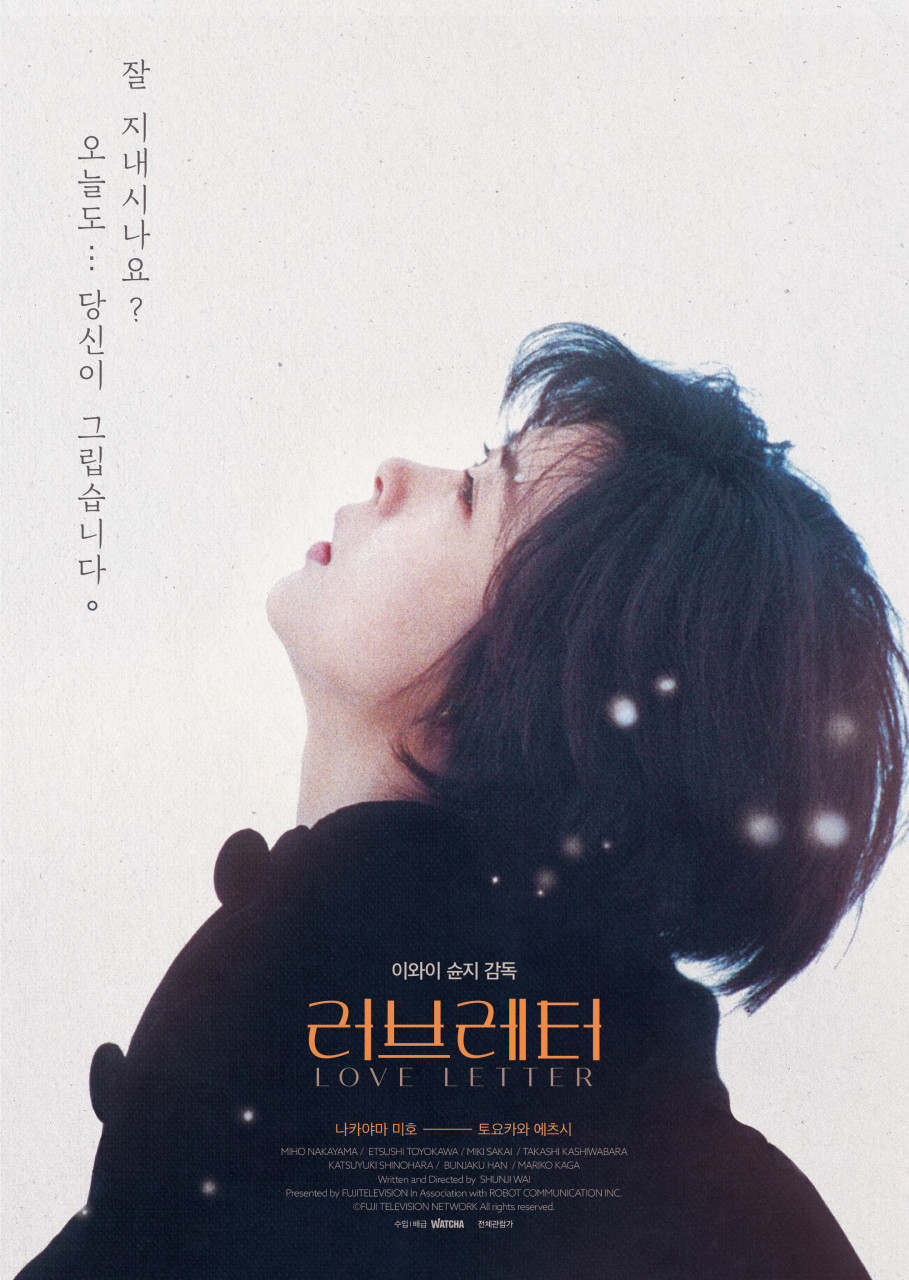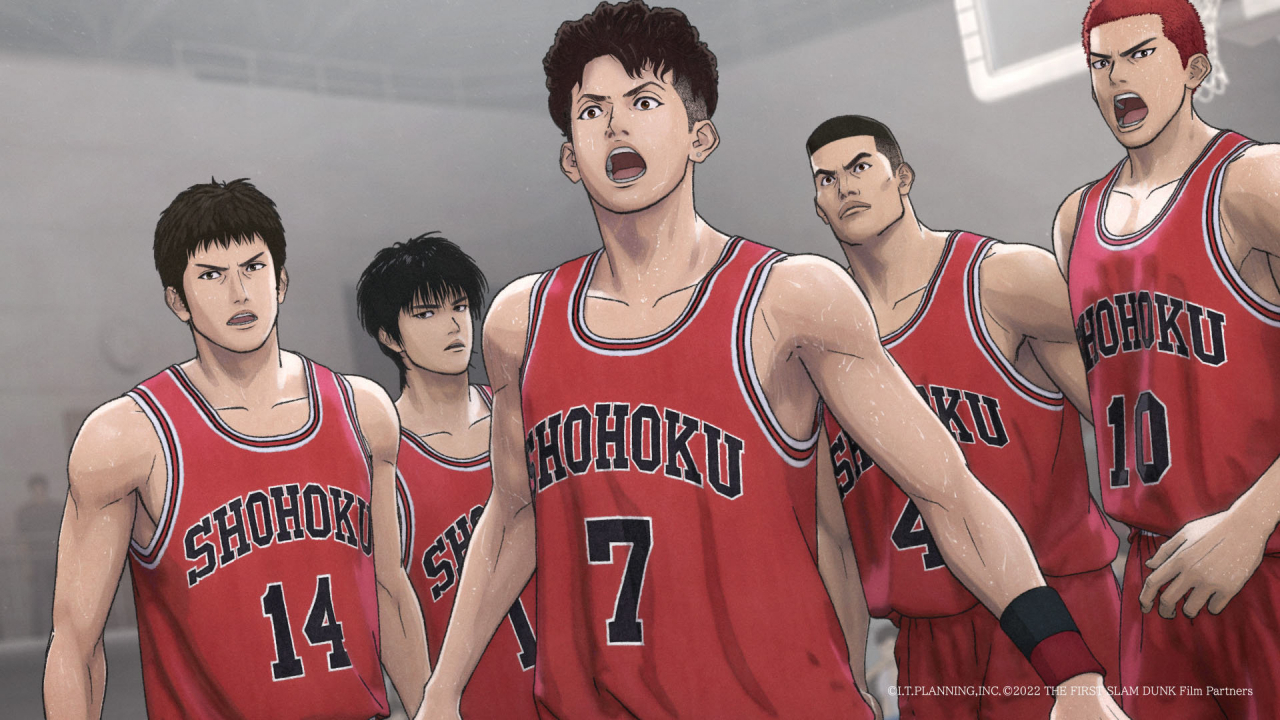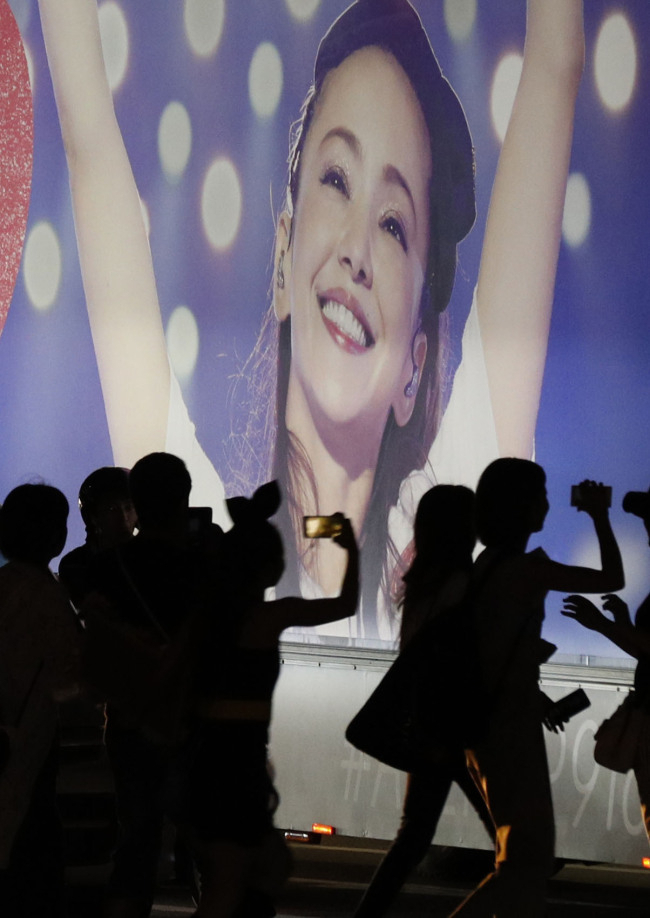 |
The official poster for "Love Letter," a Japanese film from 1995 that opened in Korean cinemas in late 1999 after South Korea's market opening to Japanese movies. It remains one of the highest-grossing Japanese films in South Korea to date. (Fine Line Features) |
When “The First Slam Dunk,” a Japanese animated film, opened in local theaters on Jan. 4 of this year, the response was unexpected -- it was a smash hit.
Moviegoers in their 30s and 40s flocked to watch the big-screen sequel to the 1990s TV series “Slam Dunk,” which aired on local TV from 1998 to 1999.
“It was one of our joys (as teens) to finish school, run home, eat dinner and rush to the television to watch ‘Slam Dunk,’” Oh Jang-ho, a 37-year-old office worker in Seoul, told The Korea Herald at a cafe in the Itaewon area.
“It’s all we’d talk about at school. It even ignited a basketball boom during recess," he said.
The original "Slam Dunk" craze he described occurred back in the ’90s, when the comic book series under the same title became a massive hit among teens here.
The TV series arrived at the pinnacle of this frenzy. It was one of the first Japanese anime series to hit local TV following South Korea’s decision to open up the domestic market to Japanese cultural products that had been de facto banned for decades.
In retrospect, the notion of prohibiting a particular country's cultural products raises some serious eyebrows today. But back then, ending the ban was a bold decision that required top-level political commitment – namely that of the president of South Korea.
Taboo Japanese culture
To understand the context behind the ban, it’s important to look back at history. For 35 years from 1910, the Korean Peninsula was a colony of the Japanese empire, which employed strategies of cultural assimilation and imperialism to dominate the territory. Koreans had to learn Japanese in school instead of Korean, adopt Japanese names and suppress any show of pride in Korean identity or culture.
 |
A promotional image for the film "The First Slam Dunk," which premiered in Korea on Jan. 4. (NEW) |
Following the liberation of Korea from Japan in 1945, there was a "prevalent narrative" shared by the government and the public that "the Japanese language and the culture must be driven out," in order to restore three decades of lost sovereignty, a 2019 report published by Sogang University read. "A Study of Anti-Japanese Nationalism in Korea" explained that Koreans wanted to become "new citizens of a new country by shedding their old habits of colonialism.”
While formal diplomatic ties were eventually forged between South Korea and Japan in 1965, South Korea continued to veto Japanese cultural products.
“Following the normalization of Korea-Japan ties in 1965, Japan made efforts to export its films to Korea, but the Park Chung-hee administration at the time refused the offer out of consideration for public sentiment,” said Han Young-kyun, a Japanese language professor at Seokyeong University.
Normalizing ties was deemed “necessary” to advance Korea’s economy, but the public sentiment remained deeply unfavorable towards the culture of their former colonizer, Han explained.
South Korea remained relatively insulated from the influence of Japanese culture until the 1970s, but this began to change significantly in the 1980s.
In 1989, overseas travel restrictions were completely lifted, allowing ordinary South Koreans to take trips abroad and people who traveled to neighboring Japan and began bringing home Japanese products.
Illegally obtained Japanese comic books, anime videos and J-pop albums secretly spread like wildfire throughout the nation.
“Illegally copied and translated Japanese comic books were being sold in neighborhood markets. Japanese films, TV shows and anime were illegally distributed in a similar way, with more Koreans owning VHS players,” Han noted.
“We borrowed Japanese anime titles like ‘Dragon Ball Z’ and ‘Neon Genesis Evangelion’ from local video rental stores. People around me were freely listening to Japanese rock bands like X-Japan. Looking back, they were all illegally burnt videos or CDs,” office worker Oh reminisced.
Fears of Japanese cultural invasion
The illicit spread of Japanese pop culture made some people, including government officials, concerned. But with the advent of the internet, it was almost impossible to contain. In the ’90s, fear grew among onlookers that Korea might be facing another “Japanese invasion” -- this time via popular culture.
By the mid-1990s, some politicians began to voice the need to open Korea's doors to Japanese pop culture officially, claiming that the influx was no longer avoidable.
Then-President Kim Dae-jung, who took office in February 1998, pledged a market opening, a decision that elicited mixed reactions from the public.
On Oct. 8, 1998, Kim and then-Japanese Prime Minister Keizo Obuchi issued a joint declaration on the “future-oriented partnership” between the two countries based on reconciliation. It was a landmark accord that paved the way for a period of friendly ties lasting nearly a decade.
 |
The Oct. 19, 1998 edition of The Korea Herald (The Korea Herald) |
On the same day, Kim directed his government to have confidence in Korea’s own cultural market and “open up (to Japanese culture) without fear,” making official the end of the restrictions on Japanese cultural imports.
The Herald's Oct. 19 edition features an article titled “Japanese pop threatens the local music industry,” reflecting worries that followed the decision.
“Ever since President Kim Dae-jung made a public pledge in the beginning of this year to unlock the nation’s doors to Japanese pop culture, the country has been awash with arguments for and against the plan,” the article read.
“Fan clubs have sprouted over the years. There are at least a dozen known fan clubs for Japanese musicians, including big names like Namie Amuro, Speed, GLAY and X-Japan.”
The article contains an interview with Kim Hae-young, a high school student at the time, who said that half of her friends “own at least one Japanese music CD.” She denied that her love for J-pop was a threat to patriotism.
Critics expressed concerns that the opening of the market would deal a heavy blow to the Korean music industry.
“Among the different cultural genres in question, allowing Japanese pop music to enter the local market has been among the more contentious issues due to its possible economic and psychological ramifications,” the article said.
Early tides of Korean Wave
The market opening occurred in four stages spanning from 1998 to 2004. Despite initial concerns, a Japanese cultural invasion never happened.
In fact, it was quite the opposite: Korean culture made waves.
In the late 1990s and early 2000s, Korean dramas and K-pop began to gain a foothold in other Asian countries, on the eve of the birth of Hallyu, or the Korean Wave.
At home, cultural consumers also turned their attention to local musicians such as K-pop solo artist BoA, who debuted in 2000, and boy band TVXQ, which debuted in 2003. Their performances would become cornerstones for the mega-success of the current generation of K-pop artists such as BTS and Blackpink.
 |
Fans of Namie Amuro gather around her poster for her concert at the Okinawa Convention Center in Okinawa prefecture, Japan on Sept. 15, 2018. (Yonhap) |
In the drama field, public broadcaster KBS' 2002 hit, "Winter Sonata" is considered to have kicked off the Korean Wave. The show became a huge commercial success in Japan after it was broadcast there in 2003. The show's unprecedented popularity was covered by both Korean and Japanese media at the time as a social phenomenon. Male lead actor Bae Yong-joon gained a huge following, particularly among Japanese women in their 30s at the time, who nicknamed him “Yonsama.”
The number of active Korean Wave fans around the world reached 178 million in 2022, according to an annual report published by the Korea Foundation in cooperation with overseas missions, released in March this year.
Meanwhile, Korean fans of Japanese pop culture remain active in small online communities and forums on the internet. Many Japanese movies and dramas are now easily available for Korean fans and viewers via streaming services such as Netflix.






![[Weekender] Korea's traditional sauce culture gains global recognition](http://res.heraldm.com/phpwas/restmb_idxmake.php?idx=644&simg=/content/image/2024/11/21/20241121050153_0.jpg)
